Ryuichi Hirokawa's (廣河隆一) heartfelt concern toward women and children is obvious as soon as you become familiar with his photos.
During his 30-year career as a photojournalist covering war-torn Lebanon in the 1970s, the Chernobyl nuclear disaster and AIDS discrimination in Japan, women and children have consistently been the main subject of his images. Most of the covers of his more than 40 books feature pictures of young girls or mothers with sons.
Speaking Feb. 21 at the opening of an exhibition of his photography at the Tunhwa South Road branch of the Eslite Bookstore, Hirokawa spoke passionately of his concern for society's most vulnerable people. "This child's name is Tania from Ukraine. She was 14 when she died of cancer," he said, recalling children's names, their personalities, their families and the circumstances of their death from violence or illness due to radiation exposure.
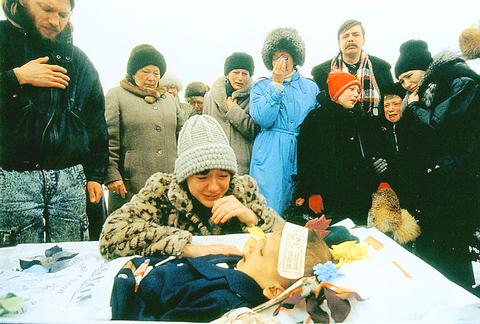
PHOTO: RYUICHI HIROKAWA, CCFJ
Hirokawa says he originally sought to capture the beauty of women in his work, but shifted his focus to a more humanitarian-oriented photography after seeing the suffering of people in Beirut in the 1970s.
"I remember one time after an air raid, a little girl was following me, trying to tell me something. I felt she was a little daughter of mine and I later became good friends with her," he said. A few months later, returning to Beirut from Japan, he learned that the girl had died in a brutal massacre at her refugee camp.
"I was shocked and resentful of the war. I was thinking of ways to save those people with my photos and prevent such suffering," he said.
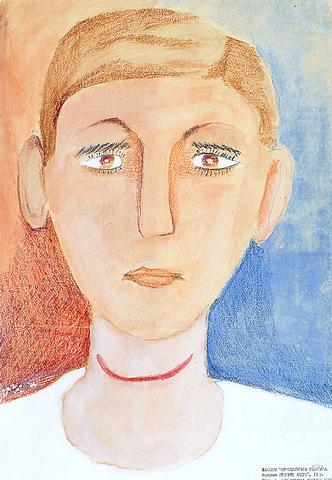
PHOTO: RYUICHI HIROKAWA, CCFJ
Until 1982, he dedicated much of his work to documenting the lives of the people in Beirut, which he said had been "washed away in the ruthlessness of the war."
Hirokawa turned his attention to another disaster area in 1986, following the catastrophic meltdown of the Chernobyl nuclear power plant.
In the 15 years that have passed since the accident, Hirokawa has returned to the city 40 times to cover the aftermath in the region. The work has won him five major journalistic awards and inspired him to found the Chernobyl Children's Fund of Japan (CCFJ).
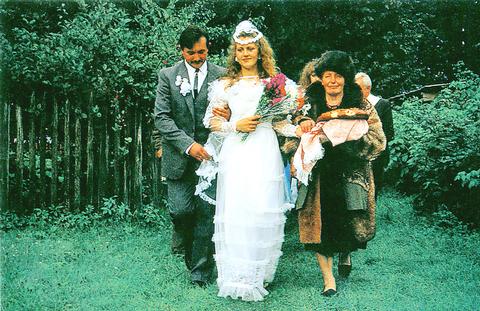
PHOTO: RYUICHI HIROKAWA, CCFJ
The foundation has donated ambulances, medicine, ultrasound equipment, milk, radioscopes and about 10 tonnes of relief goods to areas that continue to suffer from the effects of nuclear fallout around Chernobyl. CCFJ has also supported 10,000 children to recuperate at sanatariums in Belarus and Ukraine.
Hirokawa's photos from Chernobyl carry a strong anti-nuclear theme, which explains his current exhibition in Taipei amid the ongoing controversy over the Fourth Nuclear Power Plant and his invitation by the Taiwan Environmental Protection Union (
"Human beings are still unable to handle a nuclear accident," Hirokawa said.
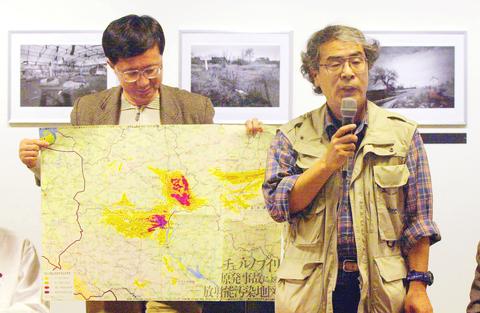
PHOTO: CHIANG YING-YING, TAIPEI TIMES
His anti-nuclear message is brought out in the exhibition titled Mourning Nature -- the Truth of Chernobyl (
"When I saw on TV Taiwan's premier holding my photo to assert his anti-nuclear stand, I was very touched and very happy," said Hirokawa. The government's decision last month to recommence construction of the plant after three months of political wrangling over the issue was Hirokawa's main motivation for visiting Taiwan. He warned at his lecture that, "An area of 160,000km2 was polluted by radioactive fallout in the aftermath of the Chernobyl accident, an area about five times the size of Taiwan."
One particularly interesting picture in the exhibition is of a wedding. At this wedding, Hirokawa faced the awkward dilemma of whether he should eat the food at the banquet. "Of course I have fear and hesitation during my visits to Chernobyl, because food and water are all contaminated," he said.
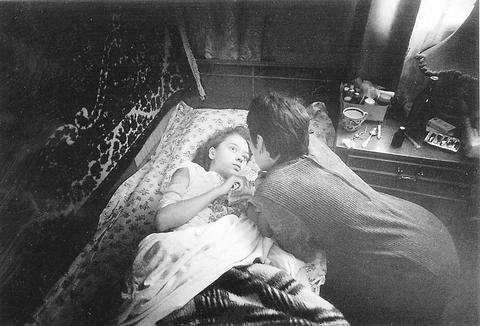
Hoping to delay a decision, he began to drink successive rounds of vodka. "By the time they started the food I was already too drunk to eat," he said jokingly.
It seems that Hirokawa has found a balance between journalistic passion and self-indulgence.
For your information
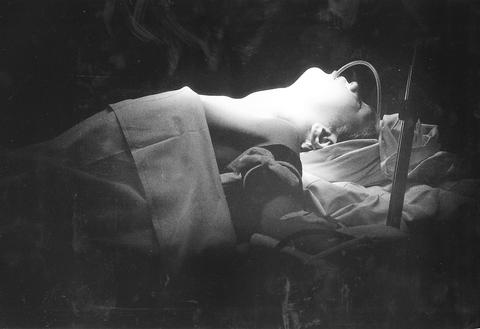
PHOTO: RYUICHI HIROKAWA, CCFJ
"Mourning Nature -- the Truth of Chernobyl" (核殤大地, 車諾堡的真實) by Ryuichi Hirokawa is on view until Sunday at level B2 Eslite Bookstore on Tunhwa South Road, Taipei.
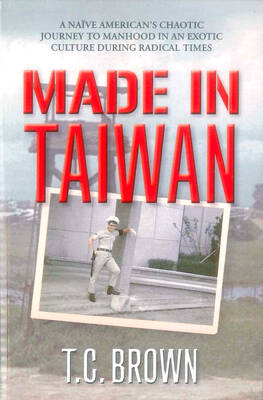
By 1971, heroin and opium use among US troops fighting in Vietnam had reached epidemic proportions, with 42 percent of American servicemen saying they’d tried opioids at least once and around 20 percent claiming some level of addiction, according to the US Department of Defense. Though heroin use by US troops has been little discussed in the context of Taiwan, these and other drugs — produced in part by rogue Chinese Nationalist Party (KMT) armies then in Thailand and Myanmar — also spread to US military bases on the island, where soldiers were often stoned or high. American military policeman
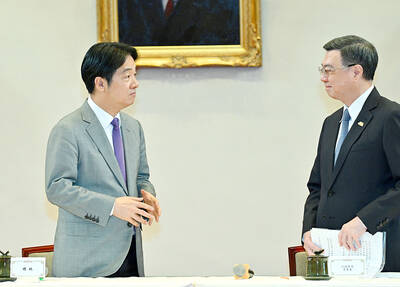
Under pressure, President William Lai (賴清德) has enacted his first cabinet reshuffle. Whether it will be enough to staunch the bleeding remains to be seen. Cabinet members in the Executive Yuan almost always end up as sacrificial lambs, especially those appointed early in a president’s term. When presidents are under pressure, the cabinet is reshuffled. This is not unique to any party or president; this is the custom. This is the case in many democracies, especially parliamentary ones. In Taiwan, constitutionally the president presides over the heads of the five branches of government, each of which is confusingly translated as “president”
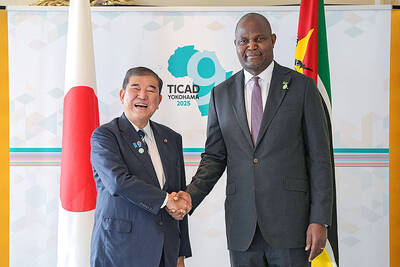
An attempt to promote friendship between Japan and countries in Africa has transformed into a xenophobic row about migration after inaccurate media reports suggested the scheme would lead to a “flood of immigrants.” The controversy erupted after the Japan International Cooperation Agency, or JICA, said this month it had designated four Japanese cities as “Africa hometowns” for partner countries in Africa: Mozambique, Nigeria, Ghana and Tanzania. The program, announced at the end of an international conference on African development in Yokohama, will involve personnel exchanges and events to foster closer ties between the four regional Japanese cities — Imabari, Kisarazu, Sanjo and

Sept. 1 to Sept. 7 In 1899, Kozaburo Hirai became the first documented Japanese to wed a Taiwanese under colonial rule. The soldier was partly motivated by the government’s policy of assimilating the Taiwanese population through intermarriage. While his friends and family disapproved and even mocked him, the marriage endured. By 1930, when his story appeared in Tales of Virtuous Deeds in Taiwan, Hirai had settled in his wife’s rural Changhua hometown, farming the land and integrating into local society. Similarly, Aiko Fujii, who married into the prominent Wufeng Lin Family (霧峰林家) in 1927, quickly learned Hoklo (commonly known as Taiwanese) and